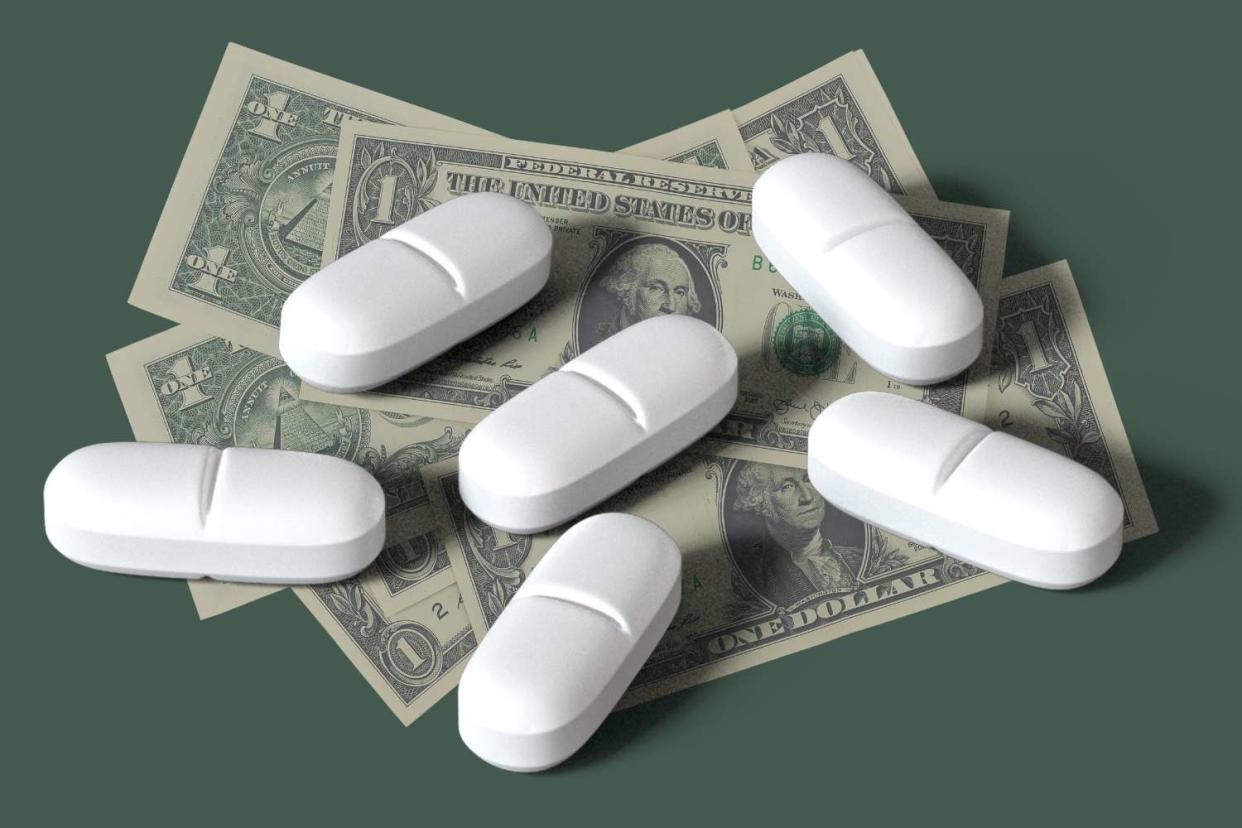$2 Generic Drugs Are on the Horizon

Verywell
The Centers for Medicare and Medicaid Services (CMS) is testing a new model that would let people on Medicare get many generic drugs for copayments of $2 per month for each drug.
CMS has picked around 150 generic drugs for the program, including medications that treat common chronic conditions like high blood pressure and high cholesterol.
Two other drug pricing models are also being tested: one to help state Medicaid programs pay for expensive gene and cell therapies and another to urge drug makers to complete clinical trials faster for drugs that received accelerated approvals.
The Biden Administration and the Centers for Medicare and Medicaid Services (CMS) have unveiled a model drug payment program that will let people on Medicare get almost 150 different generic drugs for a copayment of $2 a month per drug.
Liz Fowler, PhD, JD, a deputy administrator of CMS and director of the SMC innovation Center told Verywell that CMS “is still exploring the specific design elements of the Medicare $2 Drug List, and the model has not been launched yet.”
The savings option will only apply to generic drugs and will only be available to people who pay for Medicare Part D plans that are participating in the program. The plan is also just being tested, so it’s not expected to be in place before the 2024 Medicare open enrollment period.
Medicare is a government health insurance program for people aged 65 and older and people who have certain disabilities. It has different parts that cover healthcare services. Medicare Part D is specifically for prescription drug coverage.
Here’s what you need to know about the models CMS is testing, and other ways that you can get lower-cost prescriptions.
How Did the Plan Come About?
The new program for a price cap on drug copays is actually one of three models CMS is testing in response to an executive order issued by President Biden last October. The order called for lowering prescription drug costs for Americans and complemented the Inflation Reduction Act of 2022, which was passed by Congress last August.
The Inflation Reduction Act made it possible for Medicare to negotiate lower prescription drug prices for beneficiaries. It also requires drug manufacturers to pay a rebate if they raise drug prices faster than the rate of inflation.
Related:Here's What To Do If You'll Lose Medicaid Coverage When the Pandemic Emergency Ends
Why a New Drug Pricing Plan Is Important
Generic drugs for conditions like high blood pressure and high cholesterol have been on the market for years and are lower cost than brand-name drugs. However, copayments for generic drugs vary from one insurance plan to another, and the price of health plans can increase at any time.
Medicare beneficiaries often do not know how much they will pay out of pocket for a drug until they pick it up at the pharmacy. The new program would give them an idea of what their medications will cost ahead of time.
According to Fowler, the Medicare High-Value Drug Model will create a standard set of about 150 “high-value” generic drugs that treat the most common conditions among Medicare beneficiaries.
The new model will encourage Part D plans to offer the listed medications to beneficiaries who would only have to pay a fixed copayment of $2 for a month’s supply.
Related:How to Lower Your Drug Costs in the Medicare "Donut Hole"
Another goal of the program is to see whether creating a standard list of these common drugs will give people better access to the medications that they need and help them stick to their treatment plans.
Our aim would be for the vast majority of beneficiaries to find medication options on the $2 list to treat the conditions they are managing.
What Other Payment Models Are Being Tested?
The $2 generic plan is one of three models that the CMS Innovation Center is testing. Fowler said new models typically run for several years, and can be evaluated and changed during their durations.
Improving Access to (Expensive) New Therapies
A second model will help improve Medicaid beneficiaries’ access to expensive cell and gene therapies, which can cost more than $1 million per treatment.
Under the model, state Medicaid agencies would assign CMS to coordinate and administer agreements with the manufacturers of certain cell and gene therapies.
Paying for Newly Approved Drugs
The third model is for developing payment methods for drugs that get accelerated approval from the Food and Drug Administration (FDA). Accelerated approval lets certain drugs hit the market before all the human testing is complete.
The new model encourages drug makers to do post-approval testing and collect data. It’s usually voluntary to take part in testing by the Innovation Center, but CMS has not ruled out requiring drug manufacturers to participate in testing the three new models.
Other Ways to Get Low-Cost Generic Drugs
Fowler said that CMS’s $2 drug model offers a standardized drug list that’s “similar to the concept used by large retail chains but tailored for Part D beneficiaries and plans.” However, Fowler noted that there is a lot of variation in pricing for similar low-cost coverage by large retail pharmacies.
The programs offered by many pharmacies and pharmacy chains fill prescriptions for some generic drugs at a fixed, low copayment and are not just for people covered by Medicare.
For example, Walmart has a list of generic medications that it offers for $4 for a 30-day supply or $10 for a 90-day supply. The list includes medications for treating high cholesterol, diabetes, and mental health, as well as contraception.
Another example is Amazon Pharmacy’s RxPass, which offers a monthly subscription plan that with multiple generic medications for a flat fee of $5 a month. However, people need to have an Amazon Prime membership and pay the fee to access RxPass.

